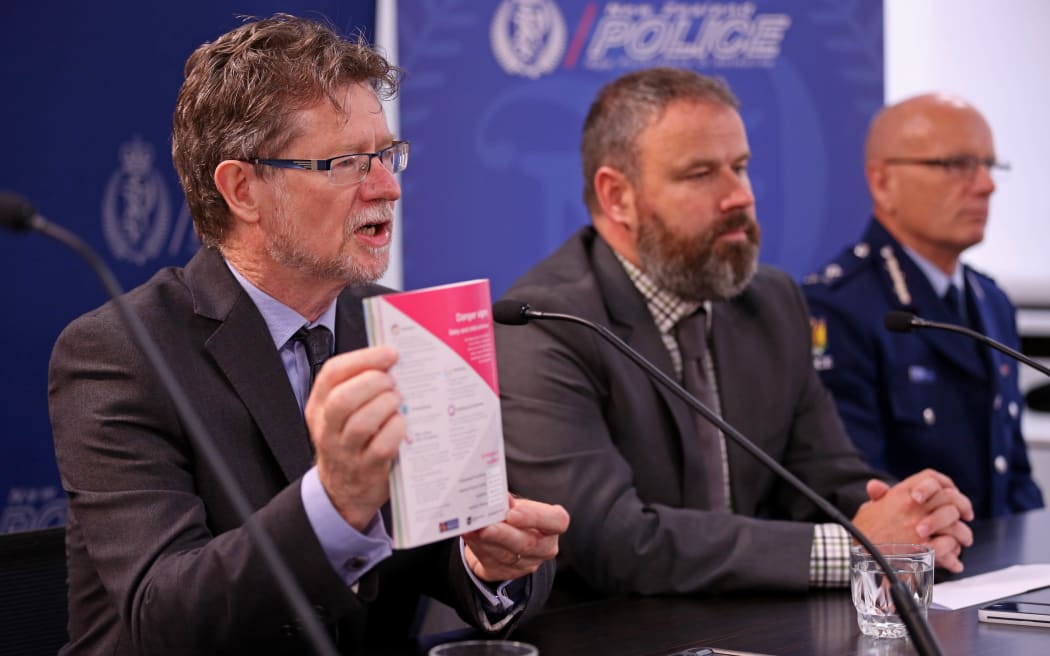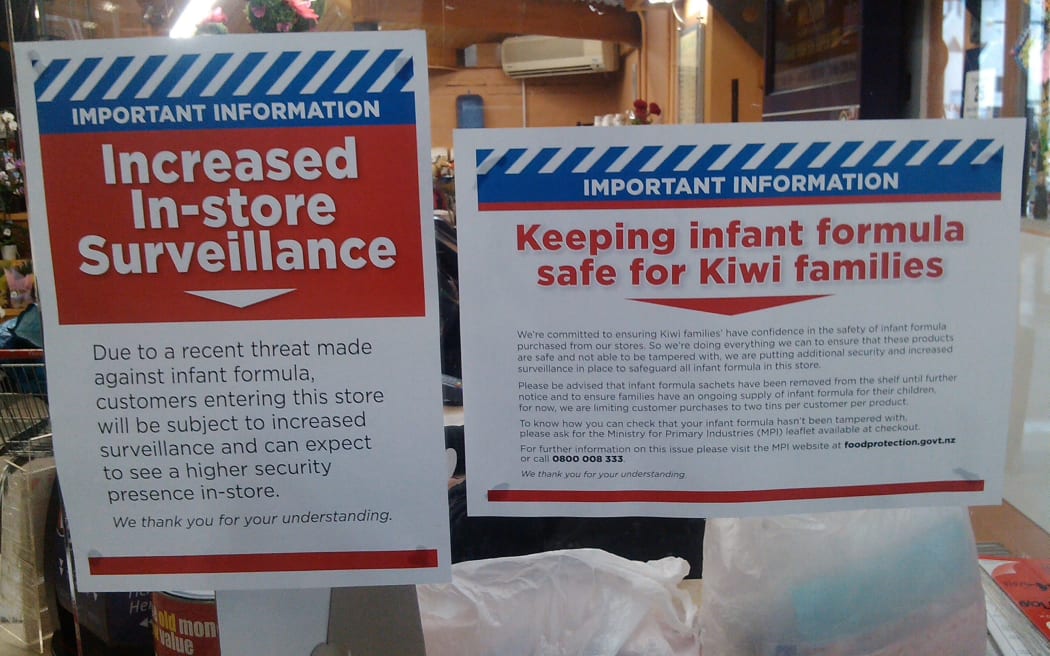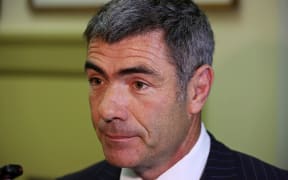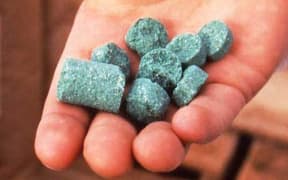Government officials kept a tight lid on the threat to contaminate infant formula with 1080 to control how the information would be revealed to the public.

Dr Pat Tuohy from the Ministry of Health, MPI Deputy Director-General Scott Gallacher and Deputy Commissioner Mike Clement at a press conference about the threat, in March. Photo: RNZ / Alexander Robertson
The Ministry for Primary Industries (MPI) has released a package of documents related to a threat, providing detail on cross-government planning, response, advice and communication preparation.
On 27 November last year, letters containing a concentrated form of 1080 were sent to Fonterra and Federated Farmers, with a threat to contaminate infant formula with it unless the poison's use in pest control in New Zealand stopped.
The threat sparked a police investigation and a cross-governemnt response, which began with the Department of Prime Minister and Cabinet convening a watch group, which met on the same day.
Key public messages were prepared by MPI, in consultation with the Ministry of Foreign Affairs and Trade, and the police in case the threat was made public.
Officials recommended ministers to keep the threat "closely contained and discussed with anyone else unless they have specific need to know".
It was eventually decided to release the information in phases to maintain public confidence and safety, and mitigate risks to markets and trade.

Photo: RNZ / Kent Atkinson
Affected manufacturers and global distributors would be the first to be told, followed by health professionals and agencies, industry stakeholders, regulatory authorities in markets and the wider public.
"On balance, officials' consider the risks of not releasing the information outweigh the risks of releasing the information," a minister briefing said. "The question is not 'if' but 'when' the information will be released."
Officials first informed the affected manufacturers on February 10 to "secure the supply chain and prepare for contingency situations" and had them sign confidentiality agreements.
On 19 February, officials had a three-hour meeting with representatives of six global companies.
Ministry of Health (MoH) and MPI officials also spoke to six key clinicians to prepare for possible poisoning symptoms or general concerns about poisoning. Supermarket chains Foodstruffs and Progressive were also notified.
Officials planned to inform the public three to four weeks later "to allow people to be vigilant against the potential for tampering, report suspicious packaging and buy extra formula ahead of time, should they wish to".
The public announcement was on 10 March following media inquiries.
Some information in the documents has been withheld because of the harm that might follow disclosure, MPI said.

Infant formula on display at Thorndon New World, Wellington. Photo: RNZ
This included material which might jeopardise the police investigation into the threat or any future response by police, as well as commercially sensitive information related to third parties.
Also with-held is information related to New Zealand's trading partners to protect the country's economic interests or international relations, it said.
Timeline of events:
- November 27: Fonterra and Federated Farmers receive the threat. The Department of Prime Minister and Cabinet convened a watch group, which included a number of agencies including MPI, the MoH, and the police. The prime minister and other relevant ministers were notified.
- December 15: A workshop is help to align responses across government departments, police and the industry.
- December 19: Dairy and 1080 supply chain assessment completed.
- January 1: Milk testing methods validated and sampling strategy approved.
- January 19, 27: Ministers meet to discuss a proposed managed and staged release of information on the threat.
- February 10: Meetings with affected infant and other formula manfuacturers began.
- February 11: Major global suppliers are informed.
- February 18: Officials begin to contact major supermarket chains to be briefed.
- February 25: Labour leader Andrew Little is told of the threat.
- March 10: The public announcement is held following questions from the media.






